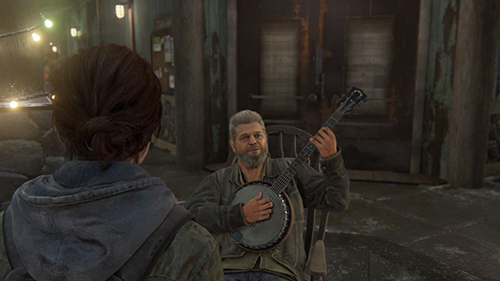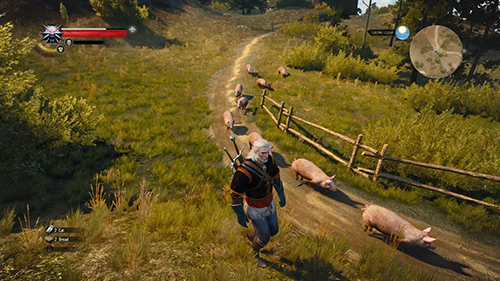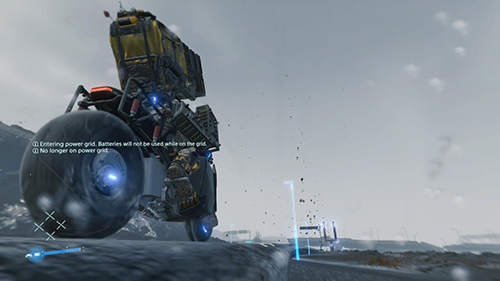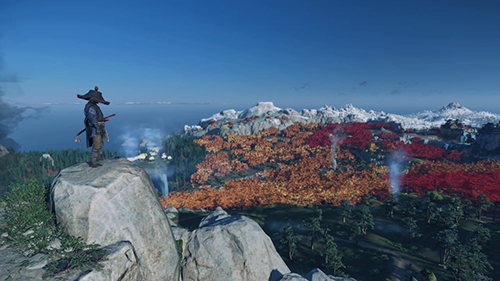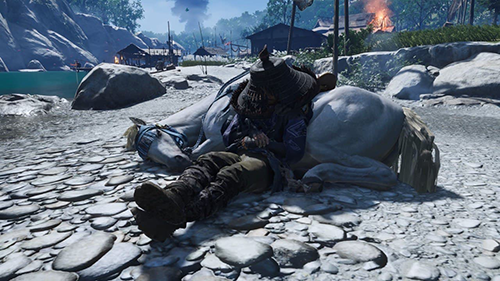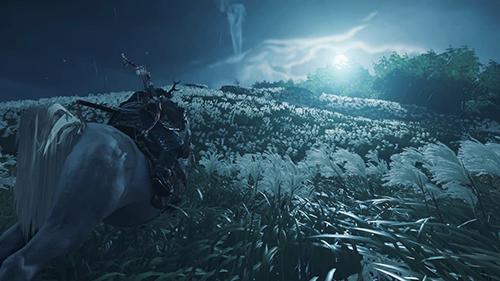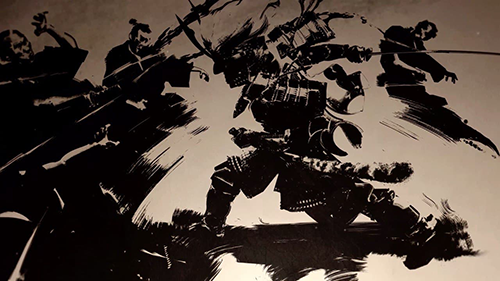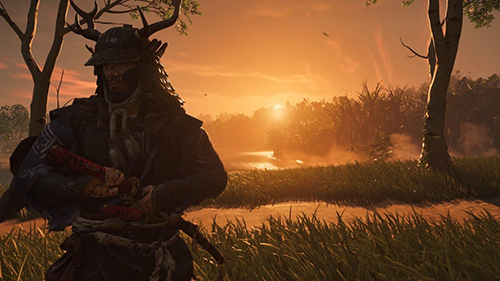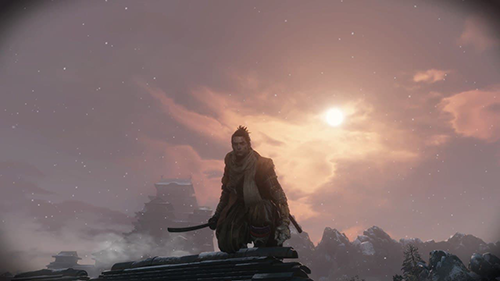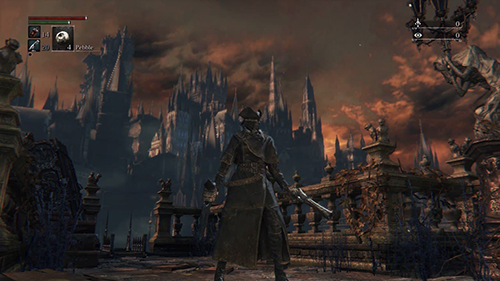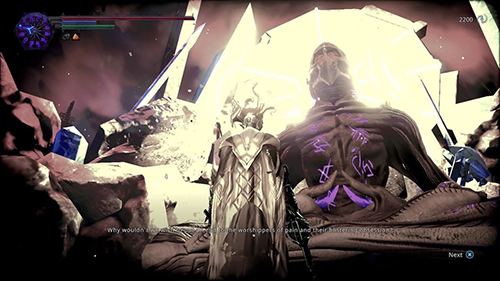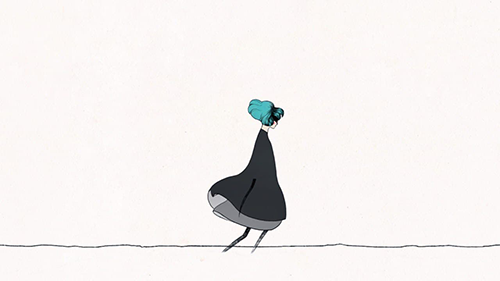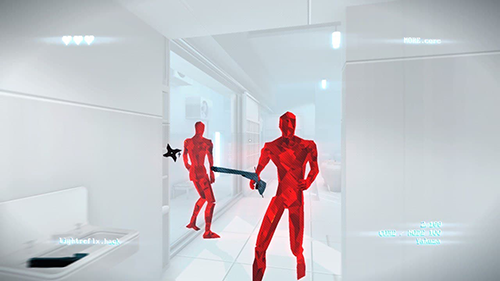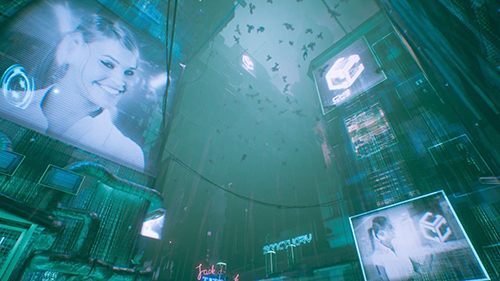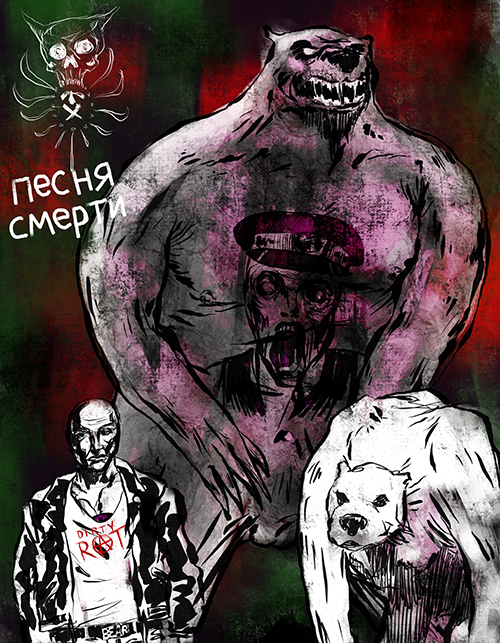So. Games I played in 2020/2021. Looking back, it seems I’ve pretty consistently been playing third person story-based action games, with a few exceptions. I know there are lots of other kinds of games, these are just the ones I tend to enjoy the most.
It’s also hard to choose still pictures of gameplay. By that, I mean it’s hard to show actual gameplay. Most of the pics I chose, as you can see, are of the main character posing in front of a nice background. I tried to screenshot some fighting or some other action, but they hardly ever work, and I finally figured out that it’s because those images can never capture the feeling you get while playing, so they always end up a bit disappointing. So now you know why there are so many posing pics, as you read on about what games I played in 2020/2021:
Let’s start by getting The Last of Us pt II out of the way, since I already wrote about it. It’s still one of the absolute best games I’ve ever played.
The Witcher 3 feels highly overrated. Not that it’s a bad game, or at least the story is ok, I just never got into it. I played the main story + side quests until I got to Skellige, so I gave it a good try. In the end I just mostly enjoyed Gwent, the in-game card game.
Death Stranding (which I’ve mentioned before) is a weird game. As is normal for Hideo Kojima, who also created classics like the Metal Gear games and more or less invented game mechanics like stealth, it feels like something new and special. I just don’t know what I really think about it. I did enjoy playing it and I love how he made the act of carrying things in a game feel more concrete than ever, even to the point where most of the game revolves around it. I also like the story and world-building that is based on creating unity rather than conflict. Even though conflict is of course a part of it, just as with Metal Gear you can more or less go through the whole game without killing anyone, and the main quest is about reuniting a devastated United Cities of America.


Which is my biggest problem with it. Even if it’s set in a future where the USA we know is long forgotten, it’s kind of nostalgic for an idealized version of it and it kind of feels unfair to its many victims (internationally and among its own citizens). At the same time, there are some moments in the story that are both touching and epic. I don’t know…
Ghost of Tsushima. Here’s what I thought about it after my first play-through:
I do prefer my samurai fiction a bit more class conscious and less nationalist than this one is. But it’s not the first story I’ve seen/played/etc where you need to close your eyes to certain things in order to enjoy them, and when you do that, this is a great game. Probably my favorite Assassin’s Creed game (without actually being one, but it feels a lot like it could have been) so far.
My problems with it are small superficial ones. I know they had Japanese consultants to get the historical settings right, but there are a few things I think they tweaked to make it work better as a game in 2020. Here are a few of them:
First, the female characters should probably be much more submissive in their behavior, at least in scenes where they are supposed to behave accordning to the norms of the time. I’m glad they didn’t go that route, however, because that would have felt weird and even in 2020 it’s refreshing to see so many of the secondary characters being women. And who knows, maybe other contemporary depictions of the time period have been colored by the time in which they were made and its preconceptions of what the old days were like (also, this is set about 400 years earlier than most samurai fiction). So this is more something I noted rather than something I have a problem with.
Second, as I said I’d have preferred a more class-conscious story. The main character is a samurai, which is similar to a knight in medieval Europe, and in this case an actual feudal lord, but he never behaves like one. Or rather, he behaves like the idealized version of a knight, with some Japanese-feeling surface-level flavoring. I don’t think that’s very accurate, just as I don’t think the idealized knights in many Western depictions are accurate. The samurai code that Jin lives by doesn’t feel at all like (as far as I know) bushido. In part, maybe, but not in the core. It’s ok that he deviates from the norms of the time, but if so, I’d have liked it to be acknowledged. Of course we see the story through the eyes of the main character, so if he has a false image of what a samurai stands for, that’s one thing. But it is never really contrasted against other, probably more common, versions. I can kind of live with this one as well, but it makes me feel like something’s missing.
Third, the Mongols. Ok, it’s an invading force and they start off by killing most everyone the main character knows, but it still would have been nice with a bit more nuance. I know the open world game structure demands an enemy force that can be present all over the map and who is always the enemy etc, so it’s understandable from a gameplay perspective, but that could also have worked with a rival Japanese lord or something that didn’t encourage that nationalist sentiment. In the end, this is also something I can live with if the gameplay experience is good enough. Kind of how I could live with the “make the UCA great again like in the pre-apocalypse that we don’t really know what it was like” thing in Death Stranding. But it does disturb me that the Mongols seem to be evil at least in part because they are foreigners.
I should probably mention what I base these opinions on. Am I Japanese? No. Am I a historian? Nope. I’ve just seen lots of samurai cinema and read a bunch of manga in the genre, especially the ones by Goseki Kojima (Lone Wolf and Cub, Samurai Executioner, Path of the Assassin) which are all to my knowledge pretty well-researched in their depictions of ancient Japan and samurai culture. Granted, the game is set a few hundred years earlier than those as well, so who knows, I may not know what I’m talking about at all?
Anyway… Even though the above mentioned elements of the story and world-building could have been done better, I’ve really enjoyed playing the game. The combat system makes for enjoyable fighting, the environments are beautiful and the map is sufficiently filled with things to do. The structure is very well-made for an open world game so it’s up there among the games in the genre that I’ve liked the most. By genre in this case I mean open world, I don’t have that many other samurai games to compare it with. I’d say Sekiro is definitely a better samurai game, but Ghost of Tsushima still makes the top 5 list (have I even played more than 3?).
And then, over time, it seems I’ve changed my mind. So here’s what I’m thinking now, after trying to play it again, about a year later when they’ve released a story expansion and fixed some things, like the Japanese lip-synch:
The things that disturbed me the first time feel much worse now. The gameplay is still mostly smooth, but I have a bigger problem with all the cultural retcons/clichés. Which means that I started playing it from the beginning just to try it and I couldn’t stop until I finished the first chapter of the story, BUT I had to set it to Japanese speach without subtitles so I could no longer understand what they were saying. That made it much more enjoyable. Too bad I can’t do the same with the new story content, because for some reason I still don’t want to miss the story…
Sekiro: Shadows die twice, on the other hand, is great! I finally finished it after having been stuck on the final boss for so long that I had to restart and play the whole game from the beginning. This game doesn’t even pretend to be historically accurate but the feel of it is that it still manages better than Ghost of Tsushima. Not that they really should be compared to each other.
It’s made by From Software and has that special level design where the whole game feels like an interconnected open world. Even if it isn’t completely open, you can, and sometimes need to, move around in areas you’ve already been. It’s also
and there’s a progression in time so that after finishing a certain boss the levels change with new story elements. Some parts are blocked off, some parts are ruined by invading new enemies or otherwise changed, some NPCs are dead.
There are also areas that are set in a different time, which is acknowledged by Wolf, the main character as it’s kind of a flashback but it’s not how he remembers it.
His ability to resurrect after being killed is also woven into the story, as is an area that is set outside of normal reality in some kind of divine realm.
Compared to earlier From Software games, Sekiro feels much more free in that you have more options for movement by jumping, stealthing or using a grappling hook to get around. I’m not going into the technical details with the fighting system which is based on posture instead of stamina and so very satisfying. This game has a special place in my heart.
So does Bloodborne, my first From Software game. I went back to this game after a few years and I finished it. And then I restarted it and finshed it again, along with the DLC, and then I finished it once more to get all three endings. And it truly is an amazing game. Some games don’t really age well, and a (at the time) 5 year old game could eaily feel old, clunky and outdated, but this one definitely holds its own against the competition. The story is great in all its subtlety. The ambience in the game is very well presented through sound, lighting, music and design. Gameplay just feels better and better the more you play and get better at it and discover nuances in what you can do. The world design and worldbuilding are both crafted with great care, attention to detail and intricacy, just as I’ve come to expect from From Software after playing this, Sekiro and a bit of Dark Souls III (which I am yet to finish as I write this, but I may go back to it at some point). I seldom play a game more than once. Playing it more than twice is even more rare, but after finishing this for the third time I almost started over again. It’s one of the great [old] ones.
Dark Souls and Bloodborne started a whole genre, often called soulsborne, or souls-like, but it started with Demon’s Souls, which is now remade by Bluepoint (who also made the PS4 remakes of The Last of Us and Uncharted) for the PS5. I never played the PS3 version so I can’t compare them, but the new one is great and I definitely see how it was a start of something. These games are known to be hard, but to a large extent that can be remedied by grinding for XP (or the equivalent souls or blood) so you can level up, and also just learning how to beat them. That was very much the case for this one.

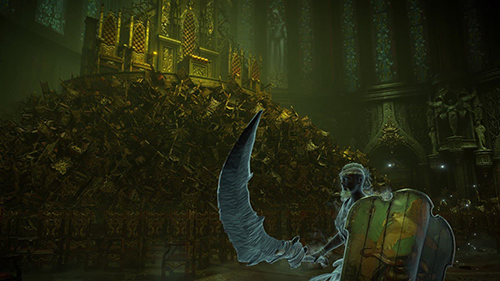
Right after finishing it I started a new game + to get the second ending and then a new game ++ to get the platinum trophy, which I failed at due to broken (or misunderstood?) game mechanics. Now I feel that I’m done with it, but it was highly enjoyable while it lasted. It’s very good-looking and a very rewarding feeling as you get better at it.
I also played some other souls-like games, such as Hellpoint, Mortal Shell and Hollow Knight. Hellpoint is the one of the three that mostly resemble the From Software games. Similar fighting, similar level design with shortcuts and save-points, similar subtle storytelling, but this one is set in space on an occult/futuristic space station.
Hollow Knight is different in that it’s a 2D platform game, but it still fits into the genre in many of the same respects that Hellpoint also does. The fighting as very precise, for lack of a better word. Most boss fights are pretty hard, some are extremely difficult. You have to be prepared to die a lot and when you do you need to find the ghost of your previous life to get your stuff back or they’re lost forever. The subtle storytelling gets pretty dark sometimes but the art style compensates by being cutely cartoonish and there are some sequences that feel more quiet and almost solemn. I finished the main and DLC stories but skipped some of the tournament-style extra boss fights. Looking forward to the sequel if/when it ever comes out.
Mortal Shell is the one of these that feels the most unique. It does some interesting things with the fighting system, and also with character builds. Instead of leveling up your character, you switch between different bodies with differing attributes and abilities. So you can find one that suits your playstyle or you can experiment or switch depending on what fits the situation you’re in. Or you can play the game just in your basic form, without a body, which makes you extremely killable but also much more agile. The leverl design feels a bit like it’s based on opening shortcuts but it’s more just about learning how the areas are interconnected.

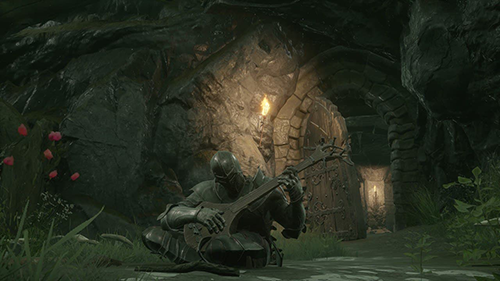
Also, the game doesn’t tell you what any of the things you find do, so you have to use them to find out, and all of them aren’t necessarily good for you. There are also lots of other functions in the game that it doesn’t tell you about so you need to happen upon them (or check the game’s wiki). All this opens up opportunities to experiment with combination tactics and makes you want to explore more parts of the game than just the world you run around in.
I also like the mood, music and personality of the game, reminiscent of Hellblade in its bleak black metal-ishness…
Spider-man is the only game based on a Marvel comic that I even felt interested in playing, mostly because it felt like it had a story, that it had a respect for the source material and that it seemed fun to play. So it did, and so it is.
As is the sequel, Spider-man: Miles Morales, starring the character from the Ultimate Spider-man alternate timeline comics. They’re both set in the same New York City, except it’s winter in the Miles Morales game. Not sure what else to say, except they both got the feeling of web-swinging around the Manhattan skyscrapers right. There is a system for fast-travel by taking the subway, but I hardly ever used it.
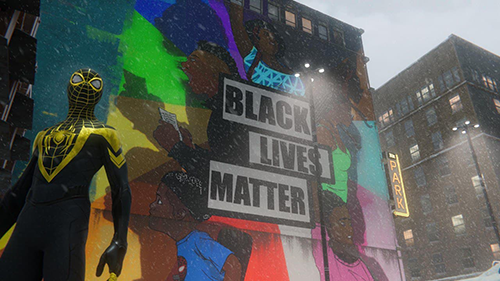
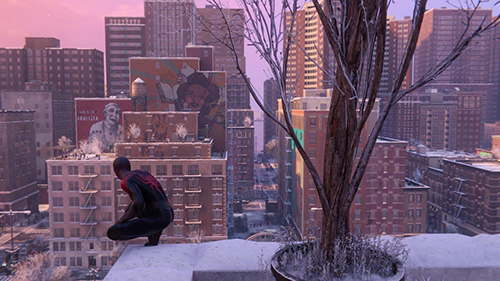
Both games can feel a bit hectic at times, with nearly constant things to do that pop up beside the main story, but most of it is fun, if a bit repetitive. And it really lives up the the cliché that the city feels like a character of is own.
Another series of open world games is the Mafia trilogy. Mafia III was one of the first bigger games I played on the PS4, and now I’ve also played through the first two in the series. The mafia genre isn’t normally my cup of tea, with exceptions of course, but the genre in itself doesn’t attract me, but I like these. At least the first and third ones, mostly because the main character in Mafia II is the least sympathetic. Mafia III was a huge leap forward in quality, probably because I find it more interesting to follow a character trying to find his way around a racist Vietnam war era alt-New Orleans than a prohibition era alt-New York…
Little Nightmares II came out, as a stand-alone sequel that maintains the same creepyness that was in the first one, but expands the world and takes the storytelling to another level. Not that the first one was lacking in any way, especially with the DLC that I had missed for some reason. Both games are well worth a play-though or two. Pretty short, good-looking games with a few twists and turns that make them much more than what you might expect from most 2D platformers. Maybe these count as 2,5D? Anyway, good stuff!
Gris fals into the category of smaller games that deal with the symbolic representation of psychological processes and emotional trauma, similar to Rime. This is 2D, pretty straightforward gameplay that does much with small means. Very stylized in its art style which looks like it’s all made more or less in pencil and aquarelle, and clever in its utilization of the limits it puts on itself, if that makes any sense?
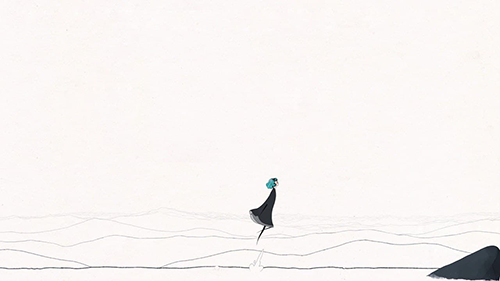
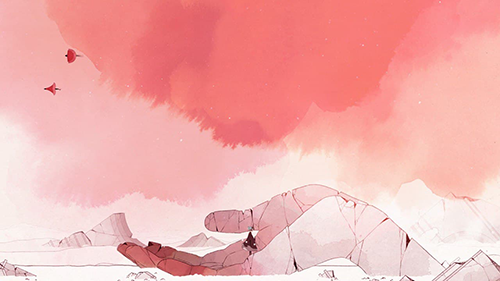
As you progress through the game, you get more abilities and the world gradually goes from very sparse grays to adding more colors, making the world feel increasingly vibrant. Sometimes, the form can create a completely different yet complimentary sense than the content, so to me this is a feel-good game about depression…
Superhot is a slow motion first person action game. With some variations, the basics is that the enemies and the world moves only when you do, so you can plan and execute your moves and choreograph your own John Woo-style action scenes. I first tried and fell in love with the second game in the series, which is Superhot VR, and now the third one is out, called Superhot: Mind Control Delete. As that title suggests, these games are full of cybernerd wordplay and a story that is both meta and more interesting than it first seems, but never fully explained.
Superhot VR kept me warm during a winter when my apartment was pretty cold at times. Even if it feels like you hardly move because it’s mostly slo-mo, you can still work up a sweat dodging bullets and shooting red guys, or cleaving bullets in mid-air with a katana.
I haven’t even finished Mind Control Delete yet, because it got too intense (which I don’t mean in a bad way).
Observer (or >observer_) is a Polish cyberpunk game starring Rutger Hauer as a disillusioned cop. Most of it takes place in one building where you walk around talking to tenants, looking for your missing son. It’s a dystopic future run by a huge tech corporation. Most people are augmented somehow, except a few weird purity cultists, which is a problem since there’s a digital plague going around. Just after arriving in the building there’s a quarantine lock-down, but it’s unclear if there’s an actual outbreak or just a malfunction. Both seem about equally plausible.

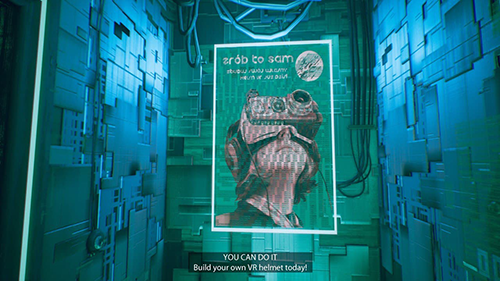
You have to take pills regularly or your vision becomes distorted because there’s some problem with your implants, and there seems to be some kind of monster murdering people in the building. So as the investigation goes along, you come across several persons who are either dead or dying. You hack into their brains to try to sort out what’s happened and piece together a bigger picture. These sequences are filled with abstractions, dream logic and, as the rest of the game, the horror of living in an extremely segregated class-based society where you have to make do because it’s near impossible to change your position. So it’s almost like it’s set in out world, as is often the case with cyberpunk. Just with more misery and technology (which is in need of repair but left as it is because no one can afford to fix it). I started playing this a few years back but made the mistake of always trying to play it when I was too tired, so I had to stop because nothing made much sense. Now that I came back to it and made sure not to play it in my sleep, I had a much better experience. Truly cyberpunk without being so derivative that it loses its own expression.
I used to believe that first person shooters weren’t my thing, but Deathloop proved me wrong. Probably mostly because of its set up. The story is that you live through the same day over and over and you need to kill 7 persons to break the loop, while a mysterious woman is trying to stop you from doing just that. There are 4 areas on the island you’re on, so you need to manipulate events to get all these 7 people to the same space at the same time, because if the day ends it all resets, and only you and the woman can remember the previous loops. Except you start with amnesia so you have to spend the first few loops just trying to figure out what’s even going on. So the premise and story are interesting, but it’s also aesthetically special. All the NPCs on the island think every loop is the first day, but it’s been going on since the 1960s, so they’re all dolled up in their best 60s outfits, prepared for an eternity of the same decadent day over and over, where they can do whatever they want because even if they die they’re just going to come back again when the day resets. They just hadn’t counted on not remembering the loops. So no one really knows how long it’s been going on.


Oh, and it’s also a multiverse and you can play as the mysterious woman, invading other players to try to prevent them from breaking the loop.
Lastly, I’ve started playing the tabletop RPG Werewolf: The Apocalypse again, something I hadn’t done since the 1900s, but now we’ve been at it for over a year. Lately we’ve been mixing it up, so we all play at least two parallel characters and not just sticking to Werewolf (I play a Gurahl (werebear) and a Virtual Adepts mage). I’ve always liked White Wolf‘s World of Darkness RPGs and their focus on collectively telling stories rather than the actual game mechanics. So our sessions are a way of building a campfire narrative, a tale that we tell together over a long period of time and something to keep out the encroaching miseries of day to day life.
So I leave you with this portrait of my main character, and that’s all for this 2022 new year’s account of what I’ve used over the last two years to enhance and escape the consensus reality that some people seem so intent on destroying for the rest of us.
Here’s the complete list:
-What I did: 2019 is over, and now it’s … 2022?
-Escapism 2020/2021 pt1a: What I read
-Escapism 2020/2021 pt1b: More things I read
-Escapism 2020/2021 pt1c: Even more things I read
-Escapism 2020/2021 pt1d: Further readings
-Escapism 2020/2021 pt2: What I watched
I’m not always sure if I write these for you or for myself or whatever, but since you’re reading this, I guess it was for you. So I hope you’ve enjoyed these rants and recommendations!


